President Trump seems to be at war with the most popular news agencies with exception of the Fox news agencies. He adores Fox News -- which is understandable based on the letter that journalists sent him pre-inauguration about promoting 'fake news'. I wrote a blog post with the letter recently about the warning. Furthermore, Fox News promotes any news which makes the President look better. Right about now you are probably wondering the following questions:
1) What is wrong with this pattern?
2) What happens when Fox news promotes 'fake news'?
In the following paragraphs, I briefly show an example of a social media post which shows news which is out-dated and can be a promotion of 'fake news.' Enjoy.
Fox News-Fake News
If any news agencies qualify for the title of promoting 'fake news' -- Fox News stands among the top offenders. Here is an example below of a tweet from Fox News last week:
At first sight, the image is of the result of a recent poll stating that public's trust of the media is around 32%. The tweet was followed by the next two tweets shown below:
and ...
The first tweet above states that the views of Americans of the media treatment of President Trump are:
1) Too tough (36%)
2) About right (31%)
3) Not tough enough (28%)
While the second tweet above breaks the first question down into partisan side as shown below:
1) Too tough: Republican (74%) and Democrat (9%)
2) About right: Republican (17%) and Democrat (40%)
3) Not tough enough: Republican (6%) and Democrat (49%)
A person could conclude that the overall impression of the media with a 32% trust aspect is not so confident in their ability to report. Furthermore, from the data above, clearly republicans tend to think that the news is too tough on the Trump administration. Right about now, you might be thinking the following question:
That is collectively what the data states -- so what is the issue Mike?
Further what is your issue with Fox News?
Here are the troubling facts surrounding those three tweets shown below:
The question used for the Poll by Gallup was the following:
In general, how much trust and confidence do you have in the mass media -- such as newspapers, T.V. and radio -- when it comes to reporting the news fully, accurately, and fairly -- a great deal, a fair amount, not very much, or none at all?
Whenever I read the results of a poll, I always have the following questions in mind:
1) What was the date on the Poll?
2) How many people were Polled?
3) What is the 'Margin Of Error' - MOE?
In the image above, the date of the Poll was from last year -- September 7-11, 2016. I would think that Gallup has taken a more recent Poll since then. The Margin Of Error on the Poll was plus/minus 4% - which is standard and the sampling size of 1,020 adults surveyed is also standard for Gallup. The results taken together with the two tweets below which show the 'fine print' make-up 'fake news.'
and...
Where is the 'Margin Of Error' for the two Polls above?
Clearly, Fox News is taking data that supports the stance that the network would like to take and displaying 'fake news' on social media. Furthermore, some of these networks rely on your ignorance. Yes, your ignorance. That is to not read the 'fine print'. In the above cases, the fine print uncovered the falseness of the results. I was left wondering:
Where were the results from the January 30-31, 2017 Poll asking about the Public's "trust" in the Media?
There was no Poll conducted at that time. The three tweets above really ask two fundamentally different questions which Fox News tries to tie together. Trust in media is different that "toughness". In fact, when the media is "tough" on President Trump, he refuses to answer questions and defaults to "your fake news". That strategy has not proven good for him since he has taken an oath in the Presidential Office.
Upon seeing the results above, I decided to look up the methodology of Gallup which I discuss briefly below in the next section.
Gallup Polling
Gallup Polling has been around for quite awhile. George Gallup founded the company in 1935. Over the years, the Gallup Company has expanded to conducting an enormous amount of surveys on a daily basis. Here is the methodology from the 'Wikipedia' page for 'Gallup Poll':
Gallup conducts 1,000 interviews per day, 350 days out of the year, among both landline and cell phones across the U.S. for its health and well-being survey[11] and political and economic survey. Gallup Daily tracking methodology relies on live interviewers, dual-frame random-digit-dial sampling (which includes landline as well as cellular telephone phone sampling to reach those in cell phone-only households), and uses a multi-call design to reach respondents not contacted on the initial attempt.Gallup completes 500 cellphone surveys and 500 landline surveys daily, divided evenly between the two topical questionnaires.[12] The population of the U.S. that relies only on cell phones makes 34% of the population.[13]The findings from Gallup's U.S. surveys are based on the organization's standard national telephone samples, consisting of list-assisted random-digit-dial (RDD) telephone samples using a proportionate, stratified sampling design. A computer randomly generates the phone numbers Gallup calls from all working phone exchanges (the first three numbers of your local phone number) and not-listed phone numbers; thus, Gallup is as likely to call unlisted phone numbers as well as listed phone numbers.Within each contacted household reached via landline, an interview is sought with an adult 18 years of age or older living in the household who will have the next birthday. Gallup does not use the same respondent selection procedure when making calls to cell phones because they are typically associated with one individual rather than shared among several members of a household. Gallup Daily tracking includes Spanish-language interviews for Spanish-speaking respondents and interviews in Alaska and Hawaii.When respondents to be interviewed are selected at random, every adult has an equal probability of falling into the sample. The typical sample size for a Gallup poll, either a traditional stand-alone poll or one night's interviewing from Gallup's Daily tracking, is 1,000 national adults with a margin of error of ±4 percentage points. Gallup's Daily tracking process now allows Gallup analysts to aggregate larger groups of interviews for more detailed subgroup analysis. But the accuracy of the estimates derived only marginally improves with larger sample sizes.After Gallup collects and processes survey data, each respondent is assigned a weight so that the demographic characteristics of the total weighted sample of respondents match the latest estimates of the demographic characteristics of the adult population available from the U.S. Census Bureau. Gallup weights data to census estimates for gender, race, age, educational attainment, and region.[14]The data are weighted daily by number of adults in the household and the respondents' reliance on cell phones, to adjust for any disproportion in selection probabilities. The data are then weighted to compensate for nonrandom nonresponse, using targets from the U.S. Census Bureau for age, region, gender, education, Hispanic ethnicity, and race. The resulting sample represents an estimated 95% of all U.S. households.[15][16]
The list of various questions can be downloaded here. Returning to the initial tweet regarding the trust in media by the Public, the Gallup Poll conducted back in September revealed more interesting data that is shown below taken from the original Poll article found here:
Along with the following reasons for the percentages found offered by Gallup below by Party:
Republican:
Republicans Fuel Drop in Media TrustWhile it is clear Americans' trust in the media has been eroding over time, the election campaign may be the reason that it has fallen so sharply this year. With many Republican leaders and conservative pundits saying Hillary Clinton has received overly positive media attention, while Donald Trump has been receiving unfair or negative attention, this may be the prime reason their relatively low trust in the media has evaporated even more. It is also possible that Republicans think less of the media as a result of Trump's sharp criticisms of the press. Republicans who say they have trust in the media has plummeted to 14% from 32% a year ago. This is easily the lowest confidence among Republicans in 20 years.
Democrats:
Democrats' and independents' trust in the media has declined only marginally, with 51% of Democrats (compared with 55% last year) and 30% of independents (versus 33% last year) expressing trust. Over the past 20 years, Democrats have generally expressed more trust than Republicans in the media, although in 2000, the two parties were most closely aligned, with 53% of Democrats and 47% of Republicans professing trust.
It is important to offer all of the details of the Poll conducted by Gallup. Otherwise, the results could be construed as 'fake news'. As for the 'treatment' of the President and his administration by the media, the original results are contained in the original article offered by Gallup on their website - here.
Conclusion...
There is no doubt that the Nation is split on the treatment of President Trump in the news. That is to be expected given the results of the election. The country is split down the middle. Whenever a Poll is conducted, read the 'fine print' at the bottom. News agencies should be forthright in their dissemination of news on social media. I do not argue that each news agency has a mission to be slightly biased in their reporting. I would expect no different. Although, when presenting Polling data, the facts (the numbers) speak for themselves.
Presenting old data along with new data to fit a story or them is disingenuous. Fox News has disseminated 'fake news' before. What is baffling to me is how the President believes that one news agency is more honest that the others. Regardless, each of us have the tools (iPad, iPhone, PC's, etc) to get down and investigate the truth from reporting. Keep on exploring widely. Read widely. Think critically about the news that you are reading on a daily basis. Does the news that you are reading align with the reality you are experiencing on the street or in school? Make note of the differences and similarities. Don't believe any one news agency at first sight.
Until next time, have a great day!
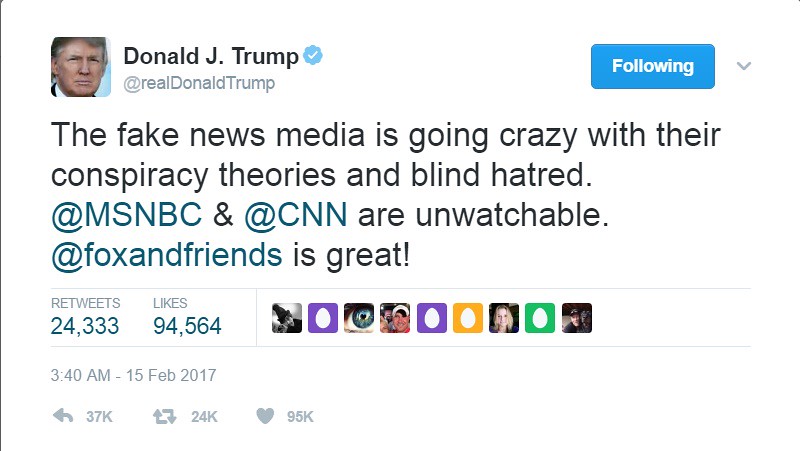

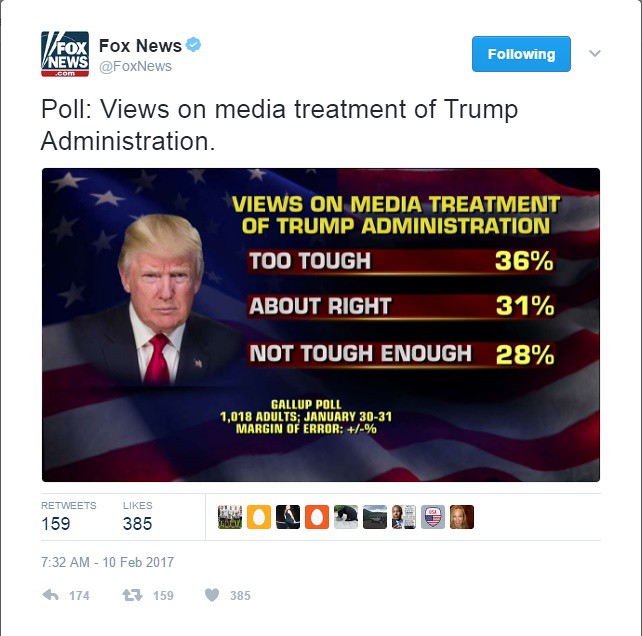
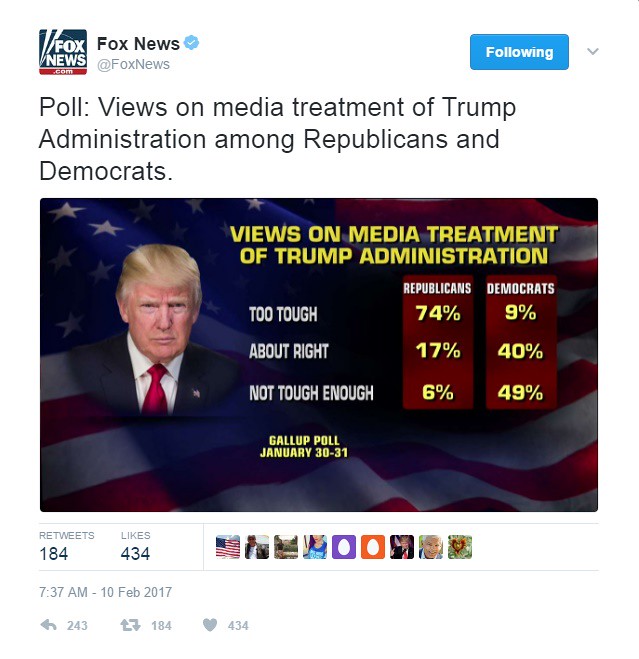
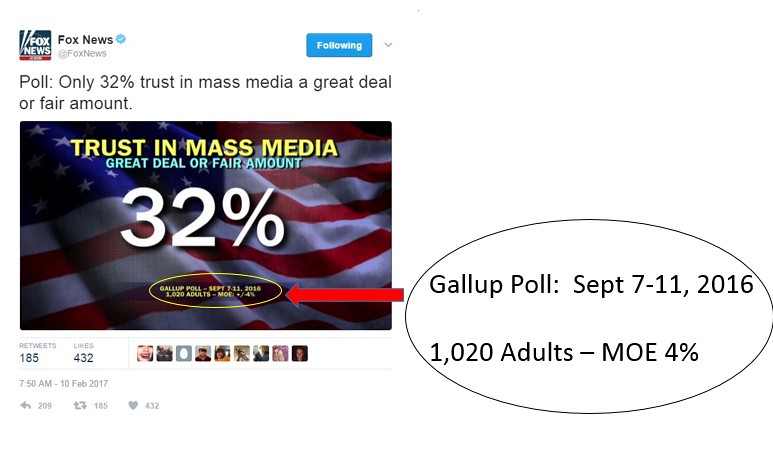
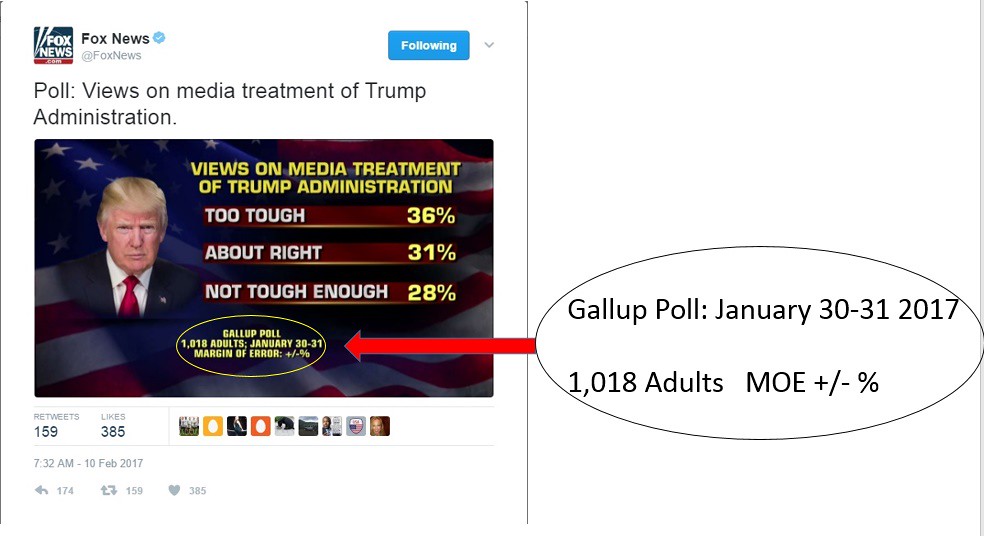

No comments:
Post a Comment